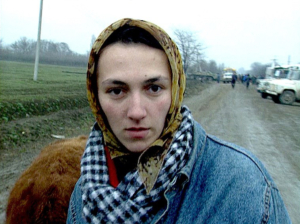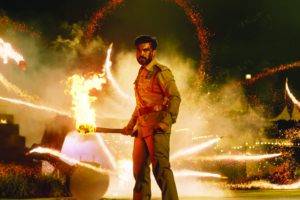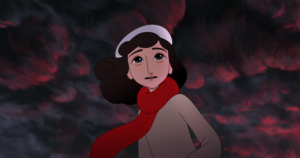The Dish (Rob Sitch, 2000) is perhaps the perfect end-of-term movie for a secondary Science classroom. Every teacher knows the scenario. Assessment’s been completed, the curriculum’s been covered, but there’s that slender week of classes sitting between you and your students and those ever-appreciated holidays. Starting a new unit of work is inconceivable, but you want to do something more productive than letting the students have free time (read: Minecraft). It’s times like these you need The Dish.
The brainchild of Australian mainstay Working Dog Productions – also responsible for the likes of Frontline, Have You Been Paying Attention? and The Castle (Sitch, 1997) – The Dish tells the simple story of how a small contingent of Australian technicians played an integral role in the most iconic television event of all time: the telecast of the Apollo 11 Moon landing. The film is an easygoing comedy suitable for all ages; outside of a fictionalised bit of drama in the middle as our hometown heroes lose track of the Apollo spacecraft, it’s relatively light on tension.
It’s also, it must be said, relatively light on scientific details. For those of you new to the Cinema Science feature – now entering its fourth year after migrating over from Screen Education – the preference, typically, is to dig into the scientific marrow of our cinematic subject. Is that science realistic? Is that stunt plausible? And so forth. Though there are opportunities to explore such questions in the context of The Dish – and we’ll get to that! – I must acknowledge that the film itself evinces little interest in the logistical particulars of how its eponymous Parkes Observatory tracks and transmits a signal from the Moon.
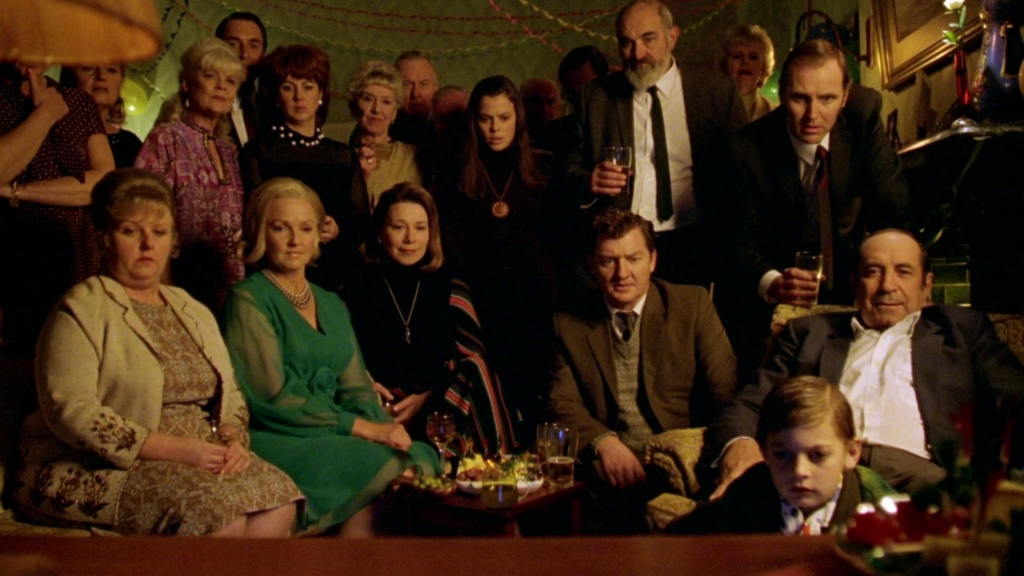
What The Dish does do, really successfully, is present the unglamorous realities of (relatively) modern science. The film is accessible and entertaining, but also shines a light on what it would be like to work as a scientist or scientific technician in many fields. There are no flashes of lightning and bursts of maniacal laughter, nor anonymous hordes of workers bedecked in lab coats. Rather, The Dish takes a historical event that’s already assumed an aura of the mythical and dispels that myth by depicting the undramatic but frequently amusing antics associated with it. Neil Armstrong might have ascended to something legendary in the public eye for his accomplishment, but, at the end of the day, he and the thousands around the Earth who assisted him were just doing their jobs.
To the Moon!
Let’s get things straight – The Dish is not really about the Apollo 11 Moon landing. Outside of stock footage early in the film, the focus is squarely on the Parkes Observatory and the events therein. If you’re a Science teacher intending to spend a few lessons looking at the scientific challenges and advancements associated with the Moon landing, there are better films to choose from: The Right Stuff (Philip Kaufman, 1983), Hidden Figures (Theodore Melfi, 2016) or, most recently, First Man (Damien Chazelle, 2018). Those films, to varying degrees, do a better job of examining both the political particulars and the technical logistics associated with that ‘giant leap for mankind’.
That said, I’d preface any conversation around the film with a run-through of the surrounding events and associated science. US president John F Kennedy’s famous ‘We choose to go to the Moon’ speech features early in the film, and an understanding of the rhetoric and context of that proclamation – some seven years before the successful Apollo 11 mission – helps position the significance of the events of The Dish (which are, after all, ancient history for today’s teenagers). Similarly, you could touch on the scientific process that led to Armstrong’s famous first steps – with however much detail suits your classroom context – before digging too far into The Dish. Again, though, if that’s the intended focus of your sub-unit of work, I’d be looking elsewhere for stimulus material.
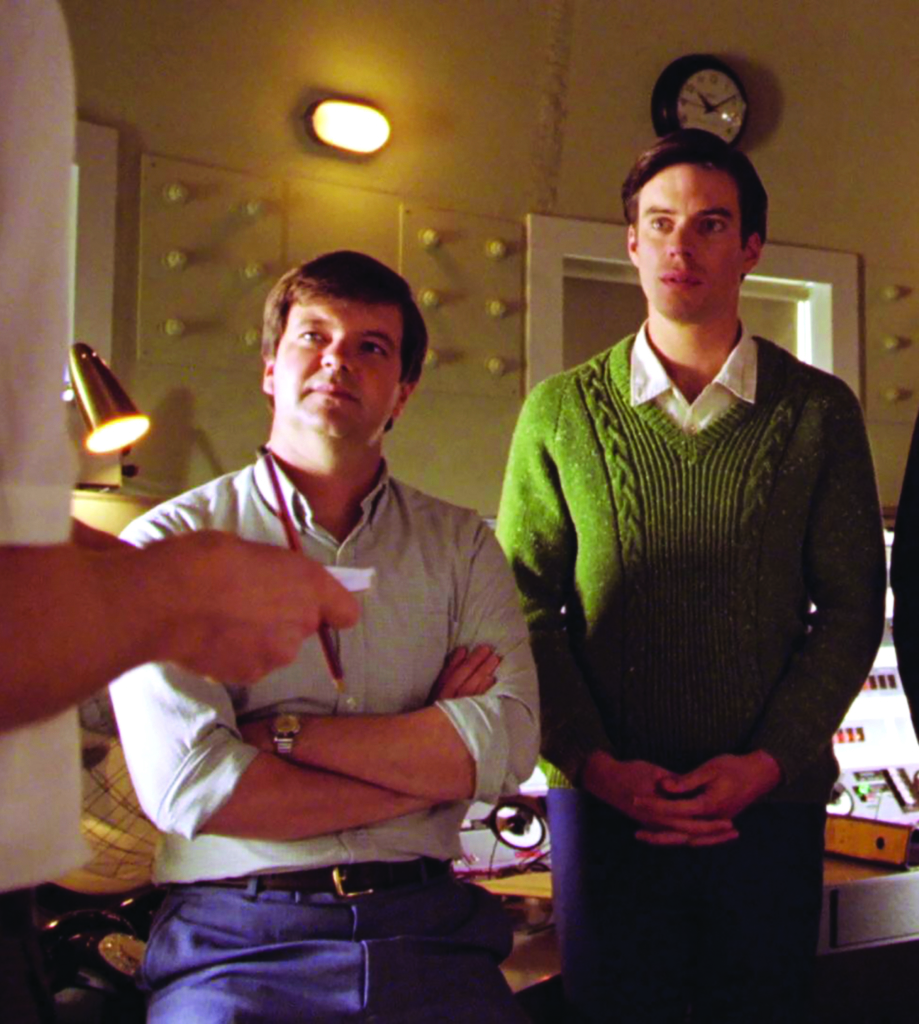
However you approach the film, some historical table-setting is recommended. It’s worth acknowledging that The Dish takes a fast and loose approach, veracity-wise. You can find a multitude of useful resources online about the Parkes Observatory, whether it’s an ABC Science article chronicling the backstory of the ‘grand old lady of astronomy’[1]Peter Robertson, ‘40 Years of the Dish’, ABC Science,1 November 2001, <https://www.abc.net.au/science/articles/2001/11/01/2814525.htm>, accessed 23 July 2020. or a CSIRO blog post fact-checking the film’s version of history.[2]Kate Cranney, ‘The Dish: Fact vs Fiction’, CSIROscope, 13 July 2019, <https://blog.csiro.au/the-dish-fact-vs-fiction/>, accessed 23 July 2020. The latter clarifies a few notable concoctions, such as the entirely fictional power failure and the erasure of the contribution of other Australian observatories (like Honeysuckle Creek Tracking Station, which actually transmitted the first minutes of the broadcast).
What The Dish does, really successfully, is present the unglamorous realities of (relatively) modern science. There are no flashes of lightning and bursts of maniacal laughter, nor anonymous hordes of workers bedecked in lab coats.
Even if the film simplifies matters somewhat, its basic premise – that dishes on either side of the Earth, much like ‘valves on a basketball’, are required to track a spacecraft – is certainly valid. Having a conversation about why that’s the case with a younger Science class could prove an engaging hook for a subsequent unit on astronomy (for instance, the rotation of the Earth and the changing position of the Moon relative to the surface) or electromagnetic radiation. In the reality of The Dish, at least, the Parkes Observatory is important because its size uniquely allows it to transmit television signals. Though that is, as mentioned, somewhat of a fudging of facts, it opens up a conversation around the difference between radio and television signals that could easily – with the right pruning – branch off into a productive examination of the different types of electromagnetic radiation.
Similarly, there’s an opportunity to discuss the (fictionalised) challenges facing the Parkes technicians as they search space for the ‘lost’ Apollo 11. Though the movie (understandably) obscures the mathematical particulars of Glenn’s (Tom Long) calculations – and ends up resolving the problem with the passing observation that it’s probably pretty close to the Moon – you could segue from this into an astrophysics sub-unit centring on motion and communication through the great expanse above us.
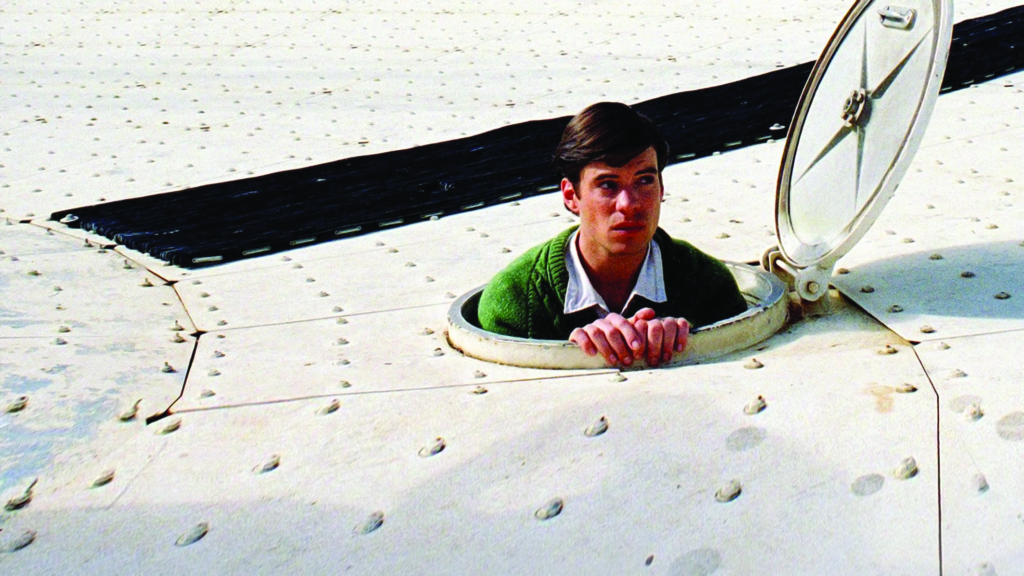
Dimensions of the dish
What makes ‘the dish’ so useful – both for the Moon landing and as a radio telescope that’s used to this day – is its size. To this day, the Parkes Observatory remains one of the largest dish telescopes in the world.[3]Wikipedia reports that it’s the second-largest movable telescope in the Southern Hemisphere, but I haven’t been able to verify this elsewhere – so perhaps take that with a grain of salt. See ‘Parkes Observatory’, Wikipedia, <https://en.wikipedia.org/wiki/Parkes_Observatory>, accessed 23 July 2020. That size is captured quite effectively by Sitch’s film, in the scene in which a casual cricket game conveniently conveys its scale, or when Cliff (Sam Neill) reports its dimensions:
It’s 210 feet in diameter, it weighs a thousand tons and can be moved to a point in virtually every direction. It’s the most powerful receiving dish in the world.
If it’s the end of term and you happen to be a Maths teacher rather than – or as well as – a Science teacher, the film thus presents a sneaky chance to incorporate some mathematics into what your students might otherwise perceive as a bludgy video lesson. That one measurement – ‘210 feet in diameter’ – can be used to spiral off into a range of activities. First convert that to metric units (roughly 64 metres, as confirmed by the official CSIRO site[4]‘Welcome to the CSIRO Parkes Observatory’, Australia Telescope National Facility website, 3 July 2020, <https://www.parkes.atnf.csiro.au/>, accessed 23 July 2020.), then consider how that compares to buildings in your local school. Bring some trigonometry into the picture, and you can consider the highest point of the dish as it rotates at different angles. Research the curvature of the dish and you can even approximate the surface area of the telescope – and how long it might take to paint, perhaps!
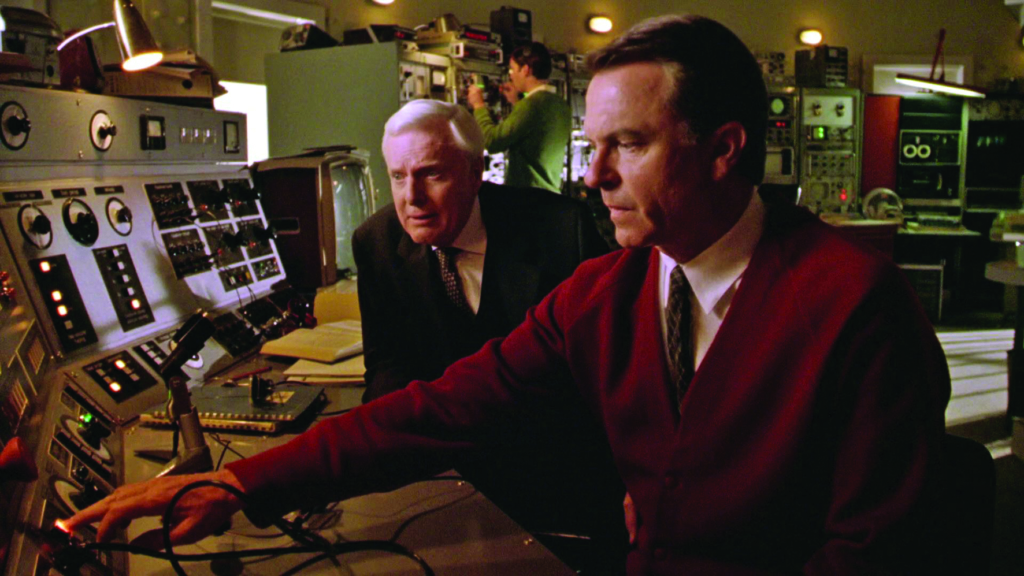
These dimensions could then be folded into a more scientifically aligned unit, in which you could explore why a large diameter might be important to accurately record data from outer space, or research the sizes of other dish telescopes and their applications. How does the size of the Parkes Observatory compare to the current largest single dish telescope in the world, the China Sky Eye?[5]Officially known as the Five-hundred-meter Aperture Spherical radio Telescope. Sure, you get some sense of the scale by comparing Parkes’ 64 metres to the Sky Eye’s intimidating 500-metre diameter, but how does that compare in terms of surface area, or volume? Can you compare as a fraction, ratio or percentage? Not only is this a chance to practise some key mathematical skills, it demonstrates how these concepts can be used to meaningfully compare life-related values.
Scientific representation
Earlier in the piece, I made a passing mention of the 2016 film Hidden Figures. Now, I’m in two minds about the quality of said film. It’s a well-intentioned attempt to tell the story of underappreciated black women scientists and the part they played in the Apollo 11 program, but it is weakened by its insistence on wrapping up its message in a crowd-pleasing package. It’s often disjointed – the three main characters’ storylines feel disconnected from one another – and frequently suffers from a slide into ‘white saviour’ tropes. Still, for secondary students, it offers up an important reminder that the white, male faces that dominate history – including scientific history – don’t tell the complete story.
The Dish suffers, it must be said, in comparison. It’s not that the film is itself sexist in its representational choices; it stands to reason that a team of scientists and technicians in late 1960s Australia would be dominated by men, and arbitrary attempts to unrealistically expand representation can, if done poorly, make for a worse overall result. Nonetheless, watching the film some two decades after its release, it’s hard to ignore the fact that some of the screenwriters’ choices haven’t aged well.
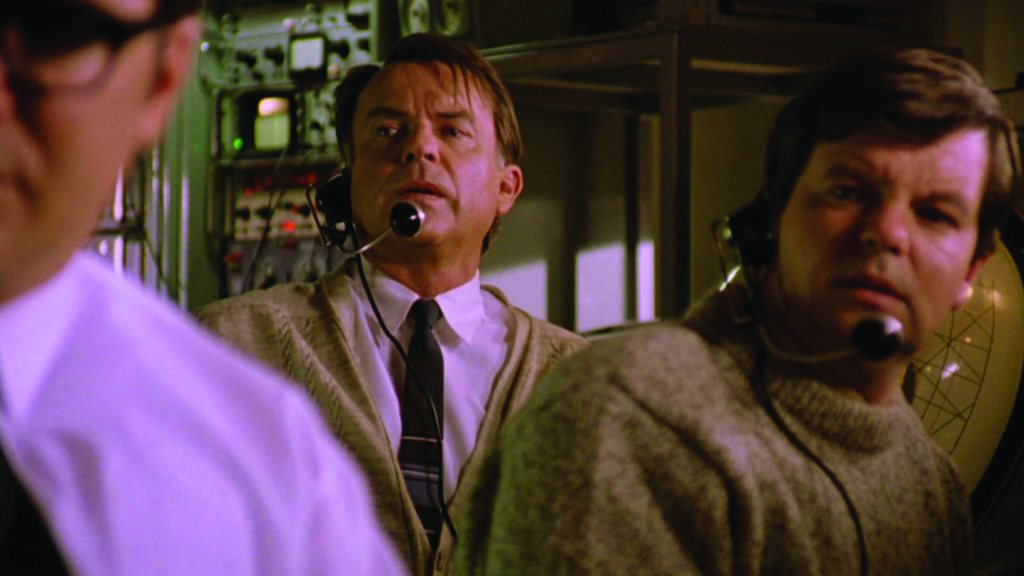
Take the character of Marie (Lenka Kripac), the daughter of Mayor Bob McIntyre (Roy Billing). She’s very much a minor character, a caricature of hippie culture who’s opposed to the military and NASA and the like. You can see why the Working Dog team included a character like May – we’ve come to expect hippies from films set in the 1960s, and her occasional complaints should lend the story a comedic frisson. But The Dish is so deadset on painting her as a comical character and undermining her arguably valid criticisms – that, say, the Moon landing is ‘the biggest chauvinistic exercise in history’ – that it feels somewhat mean-spirited in retrospect. When her depiction is combined with that of the only other major female character, Janine (Eliza Szonert) – who seems to purely exist as a ditzy love interest who needs science explained to her – the film can’t help but come across as a touch retrograde.
This isn’t intended to dismiss The Dish at all. In fact, I’d argue that these elements present a rare chance to discuss how structural sexism – stretching back centuries – ties in to the representation of women in science from fifty years ago to today. Though this is a bit of a stretch if the screening of The Dish is relegated to the end of term, perhaps students could undertake a research project exploring both how women were involved in Australian scientific endeavours circa 1969 and how gender representation has (or hasn’t!) evolved over the intervening decades.
If that’s too sensitive of a topic, you could also explore the history of Australia’s scientific partnerships with NASA and – more broadly – the US and other countries. So many historical stories centre on disputes between nations, but reams of scientific progress have been born of productive partnerships between countries. That’s a story worth telling in anyone’s book.
Endnotes
| 1 | Peter Robertson, ‘40 Years of the Dish’, ABC Science,1 November 2001, <https://www.abc.net.au/science/articles/2001/11/01/2814525.htm>, accessed 23 July 2020. |
|---|---|
| 2 | Kate Cranney, ‘The Dish: Fact vs Fiction’, CSIROscope, 13 July 2019, <https://blog.csiro.au/the-dish-fact-vs-fiction/>, accessed 23 July 2020. |
| 3 | Wikipedia reports that it’s the second-largest movable telescope in the Southern Hemisphere, but I haven’t been able to verify this elsewhere – so perhaps take that with a grain of salt. See ‘Parkes Observatory’, Wikipedia, <https://en.wikipedia.org/wiki/Parkes_Observatory>, accessed 23 July 2020. |
| 4 | ‘Welcome to the CSIRO Parkes Observatory’, Australia Telescope National Facility website, 3 July 2020, <https://www.parkes.atnf.csiro.au/>, accessed 23 July 2020. |
| 5 | Officially known as the Five-hundred-meter Aperture Spherical radio Telescope. |


